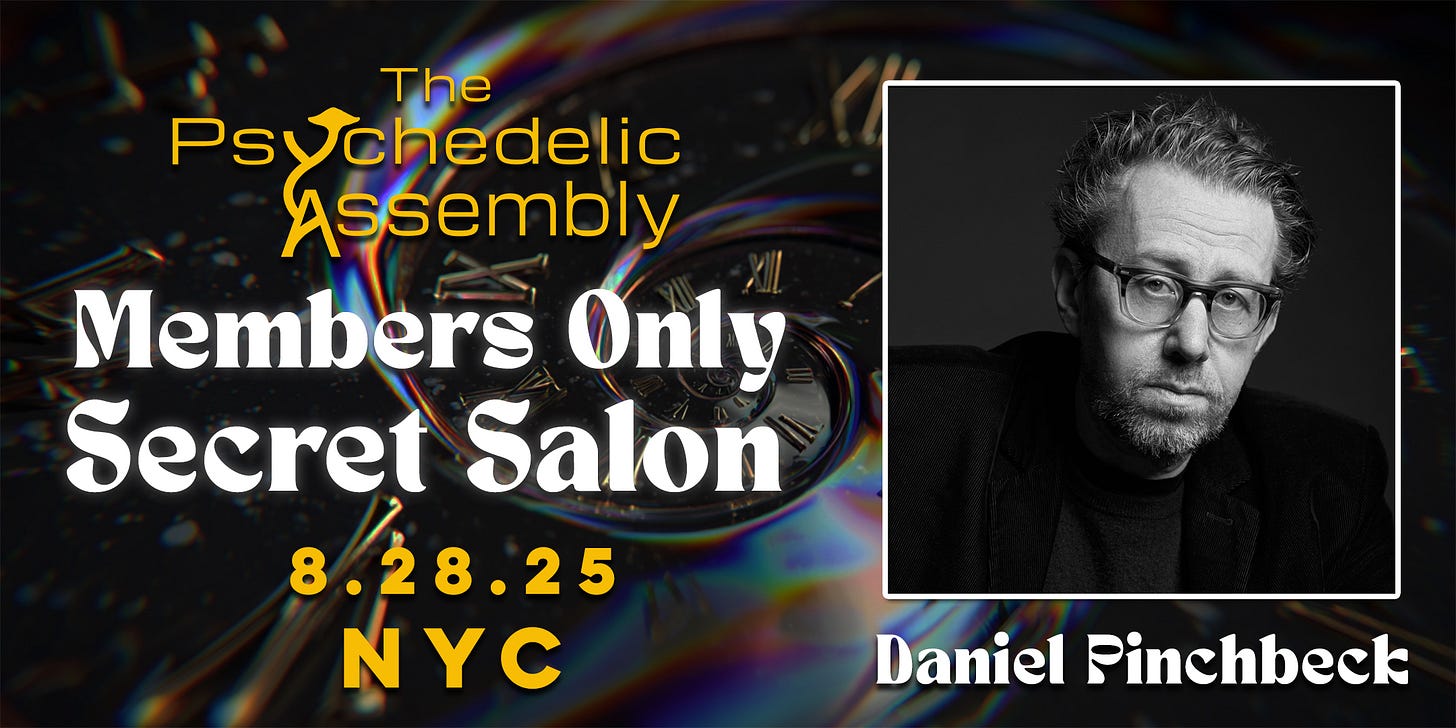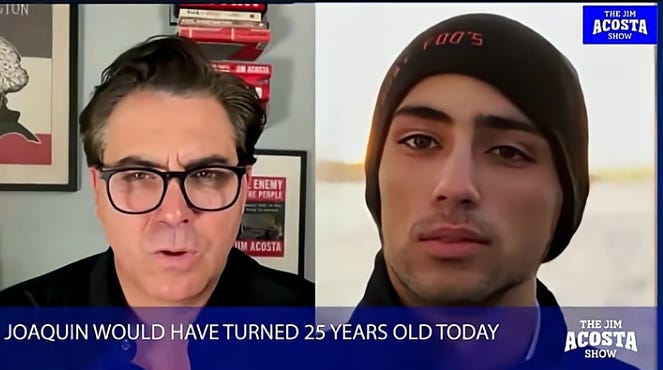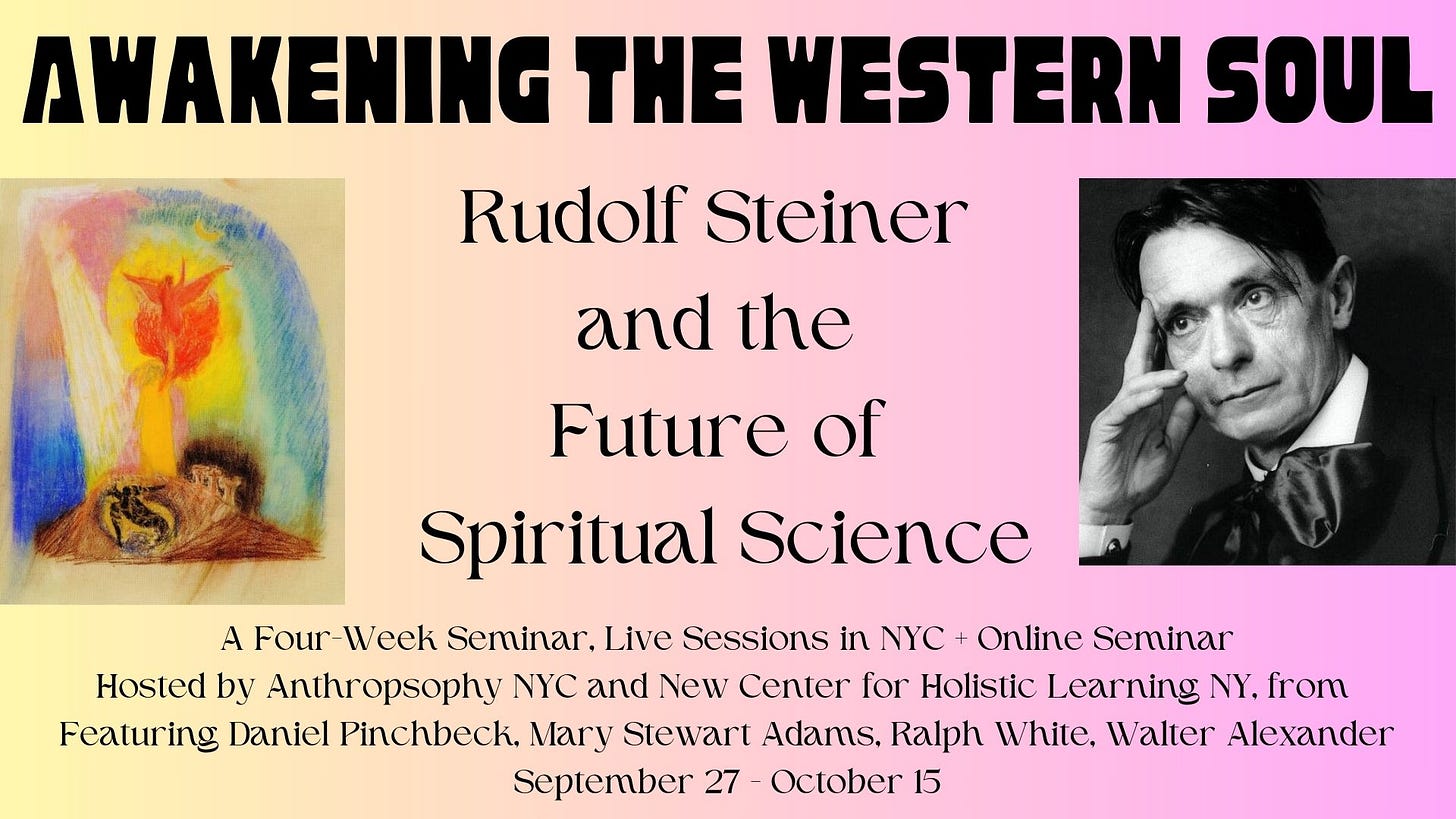At the Edge of History
Please join our live event in NYC on August 28th, exploring where we are now and where we are going
On August 28, I am speaking at an event in a downtown Manhattan loft, hosted by the Psychedelic Assembly, a New York-based membership club. According to the PA website:
The Psychedelic Assembly is a member-supported community organization cultivating connection, education, and culture at the edge of expanded consciousness.
Through immersive events, thoughtful dialogue, and creative programming, we aim to support the growth of an authentic psychedelic culture rooted in curiosity, care, and collective transformation.
My talk, At the Edge of History: Where Do We Go from Here?, is part of their “Secret Salon” series, available for Psychedelic Assembly members. If you want to join us on the 28th, you have to become a member there, which you can do via these links:
Annual - $420 a year: https://square.link/u/2vAls6Om
Monthly - $42 a month: https://square.link/u/AYVYn6pE
When you sign up as a member, you can get 20% off tickets to the salon, using the code: EDGEOFHISTORY . Psychedelic Assembly is a wonderful organization, doing great work and community building in NYC, run by four extraordinary women.
The title of my talk (with a discussion to follow) references At the Edge of History (1971), a fantastic book by one of my favorite cultural critics, William Irwin Thompson. Thompson sought to define a new planetary mythology adequate to the challenges of our time. He explored ideas from thinkers like Teilhard de Chardin, Rudolf Steiner, Lynne Margulis, and Buckminster Fuller who he saw as prophets of the coming transformation.
Back in 1971, Thompson was already studying the challenges facing humanity in the final stage or end game of modernity (and postmodernity). Drawing on anthropology, history, myth, and systems theory, he saw we were approaching a civilizational threshold or a bifurcation point:
The technology of our industrial civilization has reached a peak in putting a man on the moon, but, as the ancients knew, the peak is also the moment of descent. Before we ascend the next peak to Mars, there is a very dark valley waiting beneath us, and, poetically enough, its darkness is made up of just those things our civilization did in order to succeed. In straining our industrial technology to the limit, we have, in fact, reached the limit of that very technology. Now as we stand in the shadow of our success, there remains light enough to see that we are approaching a climax in human cultural evolution: it seems as if the whole history of earth were being played back, but speeded up.
From over fifty years ago, Thompson realized we would soon hit a limit between the old industrial/scientific/technological worldview and new possibilities of social organization and cultural perception. Facing this end game, there was the option to build an authentic planetary culture able to integrate a mythological / archetypal worldview along with the claims of rational thought and technological development.
Thompson didn’t conceive of history as linear. He saw it as cyclical or fractal, inflected by ongoing shifts in ontologies, myths, collective consciousness, and other forces. He foresaw a future where “actual events appear to burst into apocalyptic liberation (Eros) or to close in totalitarian collectivization (Thanatos), and the ordinary no of historical reality is lost in new cinematic forms in which the event itself takes on the joy of sacrament and the terror of sacrifice.” He believed we faced the imminent prospect of divergent outcomes.
Today, we find ourselves at the edge of history, threatened with ecological catastrophe, nuclear annihilation, techno-fascistic domination (and, now, the birth of superintelligent AI which brings with it various extinction threats). Many people — not just religious zealots — have an unsettling sense that we are reaching the “end of days,” as described in Book of Revelation. We still hold the potential to build a regenerative planetary culture that integrates science with ancient wisdom traditions. Such a new planetary culture would abandon material progress as its monomaniacal goal and turn, instead, to focus on the intensification and deepening of human consciousness, along with regenerative practices for collective well-being that might redirect us from our extinction path.
I thought I would explore some of Thompson’s ideas and insights as we investigate our current, increasingly existential situation, which some call the “meaning crisis,” metacrisis, or polycrisis. As many of you know, I wrote a book about prophecies many years ago (2012: The Return of Quetzalcoatl, reprinted recently as Quetzalcoatl Returns), and it seems — to me, anyway — that we are in a time where the prophetic foretellings of cultures like the Hopi and Toltecs are, indeed, coming to pass. Because prophecy offers a mythopoetic approach to the future instead of an empircal and deterministic one, it can be difficult to correlate events as they occur with the visionary foresight of indigenous communities, expressed in vastly different registers of thought and culture.
One of the prophetic constructs that haunts me today is one I learned about years after publishing my book on the subject, via the work of the Toltec author Sergio Magaña. According to Magaña, Toltec and Aztec traditions say we are in the process of shifting from a 5,125 year period of a “Sun of Light” to a new phase of a “Sun of Darkness.” Light and darkness refer to the predominant frequency or tonality of consciousness in a particular epoch or age. During the Sun of Light, the predominant tonality of consciousness was oriented toward empirical, analytical, rational, and “day light” modes of thinking and perceiving. As we move into the Sun of Darkness period, the prevailing tonality shifts from study and manipulation of the empirical and verifiable worlds to the dreamworld, the unconscious, and the Psyche. Magaña writes about reality itself becoming more dream-like and more psychically mediated, in both positive and negative ways.
Does this feel like something that is happening to us now? It seems to me the evidence for it is all around us.
As one example, I just read Charlie Warzel’s worrisome article in The Atlantic, “AI Is a Mass-Delusion Event: Three years in, one of AI’s enduring impacts is to make people feel like they’re losing it.” Warzel’s essay begins with the surreal spectacle of Jim Acosta interviewing an AI-generated version of a murdered teenager — Joaquin Oliver, a victim of the Parkland high school mass shooting. This was an AI simulacrum made with his parents’ consent to advocate for gun control. Warzel finds the effect grotesque and unsettling—an uncanny performance that leaves viewers queasy, unsure how to respond.
For Warzel, the Acosta interview captures the quality of the generative-AI era: disorientation, where “a technology that I find useful in certain contexts” is “being treated as a portal to sentience.” AI promises revolutionary progress while offering crude, error-prone products. With no public oversight, these products rapidly reshape daily life, work, education, and culture in careless and unsettling ways. What is happening as a result, he argues, is a collective sense of madness and breakdown, as people attempt to normalize a technology that feels, all at once, trivial, exploitative, explosive, tranformative, and absurdly overhyped.
Another sign we have perhaps reached the threshold of “the end of history” (and the inevitably recursive movement back into mythological time) is what the current U.S. administration is doing to evidence-based approaches to climate, economics, and other disciplines — for instance, what RFK is doing to evidence-based approaches to vaccine science. Basically, the goal is to construct a totalitarian news and information environment where propaganda and misinformation become inescapable, while ethnic cleansing and even depopulation continue under the cover of an opaque regime of information control. If this continues, people will no longer be able to even access a shared framework of coherence, or truth, outside of ideological distortions serving the interests of an oligarchic elite. It is extraordinary to witness how easily and without substantial resistance the progressive and liberal elites in the U.S. have caved into this rapid dismantling of the institutional structure which has supported American power and hegemony over the last century. It really does seem, as Marx predicted, “all that is solid melts into air” with Capitalist modernity, leaving little trace.
In my upcoming talk in NYC, I will consider how we can understand our current reality as an expression of simultaneously empirical and esoteric processes. I will also explore what this means for our near-term and immediate future. I believe it is essential that we hold — at least as one of many frames or focusing lenses — the esoteric or occult perspective from indigenous societies and religious traditions, as well as the visionary and prophetic model developed by the Austrian occult visionary Rudolf Steiner. I will also be exploring Steiner at length in an upcoming lecture and discussion series at the Steiner Foundation in New York. You can join this in person or virtually:
Since this talk is geared for the psychedelic community, I also want to address that community directly. As I wrote about here, William Irwin Thompson also warned that psychedelics and emerging electronic technologies, when used without protection or discernment, tend to erode the boundary between the physical and psychic planes. They can open the individual’s consciousness to subtly demonic or astral intrusion. Drawing on the Ramayana, he interprets the legend of Sita’s captivity by Ravana as an allegory for the psychic and feminine dimension of humanity becoming entrapped by lower astral forces—a pattern he sees reflected in modern cults, channeling movements, and aspects of the consciousness subculture. For Thompson, the bounded physical body and finite world are safeguards that preserve sanity, humility, and empathy, while transhumanist fantasies of limitless existence incite a dangerous “Luciferic/Ahrimanic” inflation.
The limits of the modern psychedelic movement are imposed by reductive science which stridently denies the possible existence of immaterial beings or astral worlds — even while it promotes the equally bizarre existence of parallel universes, vibrating superstrings, and other invisible phenomena we have to take on faith. Ironically, the scientific denial of the existence of invisible or supersensible forces leaves people vulnerable to influences we refuse to name or give credence to.
I find the contemporary psychedelic movement’s insistence on purely scientific validation complicit in this blindness. To make psychedelics palatable for the mainstream, the community has deliberately suppressed the occult, psychic, paranormal and supernatural dimensions of these experiences—an omission both Thompson and myself believe to be a serious error. I will explore how reintegrating these lost dimensions — mythic, supernatural, psychic, occult — can help us confront the otherwise overwhelming metacrisis and hopefully find a path through it for ourselves and our communities.
I hope this inspires you and you will join the Psychedelic Assembly and be part of our salon on the 28th!






"I find the contemporary psychedelic movement’s insistence on purely scientific validation complicit in this blindness. To make psychedelics palatable for the mainstream, the community has deliberately suppressed the occult, psychic, paranormal and supernatural dimensions of these experiences—an omission both Thompson and myself believe to be a serious error."
I feel like this highlights something I've been trying to make sense of for a while now, which is the alt-right's embrace (and monetization) of psychedelics for "healing". They approach them as treatment-directed pharmaceuticals rather than as portals to the divine. No ego death, no atonement, just a $5,000 permit to cry, puke into a bucket, and spiritually bypass a lifetime of moral bankruptcy. And while this isn't at all limited to the alt-right, I just can't square the "love-unity-oneness" message of these substances with their hateful politics.
I know this seems like a tangent, but I think it directly ties in to the limits of the medical model of psychedelics. We use these substances to fill that god-shaped hole in our psyches with some kind of meaning or better model of the universe and our place in it, but by doing so we replace that gaping uncertainty of "that which is beyond us" with something that we can comprehend but is essentially false.
Daniel have you read/experienced Finnegans Wake?? Joyce said in Ulysses, “History is the nightmare from which I’m trying to awake.” FW is also structured after Giambattista Vico’s cyclic theory of history. It will only become more relevant in this hypnopompic moment. We are as cells in the sleeper/dreamer’s body.